Windows 12 is likely to be the next major update to Windows 11 — with an even bigger push of Copilot to boot.
Microsoft announced a bunch of Copilot+ PCs with Windows 11 in May 2024, which brings AI to the forefront of the company’s operating system. ‘Recall’ is an AI-powered feature that tracks everything you do on your PC, which can find any file or app you may have misplaced. Think of it like Apple’s Time Machine feature on the Mac, but supercharged.
There’s also Windows 11 24H2, the next major update that’s getting ready to launch. This features better HDR support for supported displays, Wi-Fi 7 support, the ability to create zip archives in File Explorer such as 7-zip and TAR archives, as well as many more improvements.
But where does that leave Windows 12? Granted, Microsoft’s yearly conference, Build, has come and gone for another year, with no mention of the number 12. With the company relentlessly trying to push AI into almost every facet of Windows, as shown by its latest updates to Copilot, it seems like Windows 12 may debut in 2025 instead.
Regardless of this potential change of date, there’s still plenty to look forward to in this next major update to one of the most popular operating systems in the world. With that in mind, here’s everything we’ve found so far about the next major update to Windows, alongside five features that we’d also like to see arrive in Windows 12.
Windows 12: Cut to the chase
- What is it? Windows 12 is the rumored successor to Windows 11
- When will it come out? Possibly 2025 due to the huge focus on Copilot
- How much does it cost? Should be free as Windows 11 currently is
Windows 12 release date rumors
We’d expect to see Windows 12 arrive in 2025, just beyond of support for Windows 10 ending. Furthermore, this has been the chatter on the rumor mill for a while now. We also caught a glimpse of next-gen Windows (called the ‘Next Valley Prototype Design’) at Build 2023, indicating that it might be on track for next year — although the plans may have changed after seeing Microsoft’s announcements of Copilot+ PCs with Windows 11 at Build 2024.
It’s worth mentioning, however, that an Intel executive previously confirmed the next iteration of Windows is expected to land in 2024 (although admittedly without mentioning the Windows 12 name).
Windows 12 supported devices
When Microsoft announced the availability of Windows 11 in 2021, the main requirement was for machines to have a hardware feature called TPM enabled, which is a piece of security functionality that can be found on most motherboards.
While the same requirement will most likely be requested by Microsoft again, it may be at a point where almost every PC has TPM enabled anyway.
There has been a rumor claiming that Microsoft may be planning to up the RAM requirement from 4GB (for Windows 11) to 8GB with the next-gen OS. Other than that, though, Windows 12 should support the same CPUs as Windows 11, and will likely have similar requirements:
- 64-bit processor
- 1Ghz clock speed
- 4GB of RAM
- 64GB drive
- UEFI, Secure Boot capable
- TPM 2.0 (Trusted Platform Module)
- A display larger than 9-inches with HD Resolution (1366×768)
- DirectX 12 compatible graphics / WDDM 2.x
- Internet connection
What we want to see
We don’t know much about Windows 12 yet, or whether the rumored upgrade will even become a reality, but we do have a good idea of what we want from it, with the following features topping our list.
1. Merge Skype and Teams into MSN Messenger 12
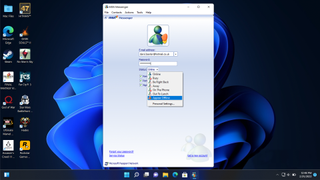
It’s no secret that Microsoft’s efforts on video calling and collaboration through messaging apps have been less than stellar in recent years. In a time when people needed to communicate remotely more, it was Zoom that took the lead and Skype was bafflingly left by the wayside.
While there have been some new features brought to both Teams and Skype, there’s still an air of confusion as to which one you should use. If you need to take part in a job interview that’s on Teams, for example, chances are you’ll quickly need to install the app and make sure it works.
Instead, let’s see them both retire and mark a fresh start for Windows 12, with the return of MSN Messenger to do the job these two apps have limped on with.
Not only would we like to see the return of nudges, winks, and classic sounds if users want, but we’d also be keen on powerful features to make it go toe-to-toe with Zoom, Google Meets, and FaceTime. Perhaps have integration with Slack, so if a video meeting is needed, it can prompt in a channel and with one button, MSN Messenger will launch with the required invitees.
Microsoft needs to reboot how it perceives itself for messaging apps, and the return of MSN Messenger could be a great start to that.
2. Live wallpaper
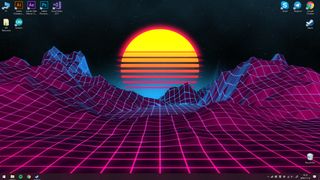
A request by TechRadar’s Senior Computing Editor Matt Hanson, and an intriguing one at that. There have been similar features in iPhones and Android phones for some years, with animations moving across these devices. But for PC and Mac, they’ve been relegated to third-party apps, such as Wallpaper Engine, to be able to have animated wallpapers with the ability to display information from your PC.
To so something similar in Windows 12, Microsoft could further push its efforts in themes, something that’s seen improvements in Windows 11, thanks to its dark themes.
Having a dedicated section for wallpapers, where you can place static bytes of information on the desktop that works with an animated live wallpaper, could appeal to all kinds of users.
Microsoft could also bring back previous wallpapers, such as the hillside of Windows XP, but have it animated, alongside some clouds displaying battery status or the weather.
This can update the desktop substantially and make it much more up to date, without having to rely on widgets or a taskbar to showcase changes.
3. Dedicated podcast app
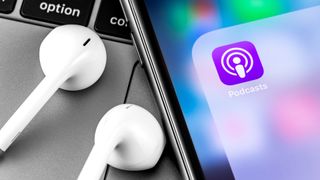
While it’s been great to see the return of Windows Media Player from Microsoft, having additional features such as podcasts feels irrelevant for what Media Player is for.
macOS has had its own podcast app since Big Sur in 2019, but if you wanted to use a similar app on Windows, it’s not clear where to start, as Microsoft doesn’t offer a dedicated podcast app.
This is why Windows 12 should include a dedicated podcast app that could also be used on other platforms, such as iOS and Android, so your subscriptions could sync across all your devices.
Podcasts are massively popular, and managing them all in a first-party app would be great for Windows users. It’s something that could really help spur the company’s effort to make content available on almost every device.
4. Dedicated streaming app
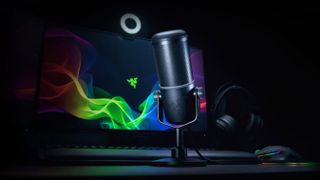
A storming idea by our resident Computing writer Jess Weatherbed, as there is yet to be an integrated option in Windows to stream what you’re playing.
For years there have been apps such as OBS and Twitch that offer ways to stream what you’re playing or watching with others. However, these apps have always required extra effort to make sure that you’re streaming to viewers in good quality, with low latency.
Then there’s the additional aspect of the peripherals that streamers use to help show them in a better light, or Stream Decks to easily control their setups with shortcut keys.
It can be overwhelming to manage multiple apps just to control all of these, which is why Windows 12 could benefit from having one app that can manage your streams and the peripherals.
Microsoft has been pushing gaming in Windows 11 since its announcement in June 2021, with a redesigned Xbox app and HDR support. But countless gamers also stream these games through Windows, so there’s a big opportunity here.
Having one app to control, say, ring lights and the streams for viewers is appealing, shifting the heavy lifting to one app. It could automate streams based on the schedule and the games being played, alongside different lighting scenarios for the different times of the day.
This could encourage more gamers to see Windows as a service, as the CEO of Microsoft Satya Nadella has been stating since the release of Windows 10 in 2015, while also making Windows 12 an enticing prospect for streamers to earn more followers and income for their careers.
5. Companion app for Android
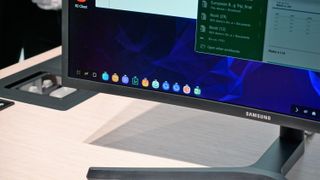
A suggestion by our Editor-in-Chief at TechRadar Pro, Desire Athow – this can be an expansion of Your Phone, Microsoft’s effort to sync your mobile to Windows. But when you open this new app in Windows 12, it would have a layout reminiscent of Windows Phone and its tile layout, and would enable a desktop experience from your phone.
This would be similar to Samsung DeX, which can transform your Galaxy S22 or Galaxy S22 Ultra into a desktop once it’s connected to a peripheral.
This new app would go beyond DeX and Microsoft’s Your Phone efforts, though. When you connect to a monitor, it would become a fully-fledged Windows 12 desktop, showcasing everything from your main PC. And when you click on an icon, it would download the content from the cloud and display it in its native resolution.
It would be an innovative extension of the cloud, where you can access your files wherever you are. Here, you’d be carrying your desktop with you and all you’d need to do is to connect your smartphone to a monitor, either with touchscreen features or a keyboard and mouse.
As with the streaming feature above, this would again further Nadella’s plans of seeing Windows as a service. Having your PC in an app is an enticing thought, and could help for those situations when you have a short window of opportunity to do some work with a spare monitor, keyboard, and mouse somewhere.